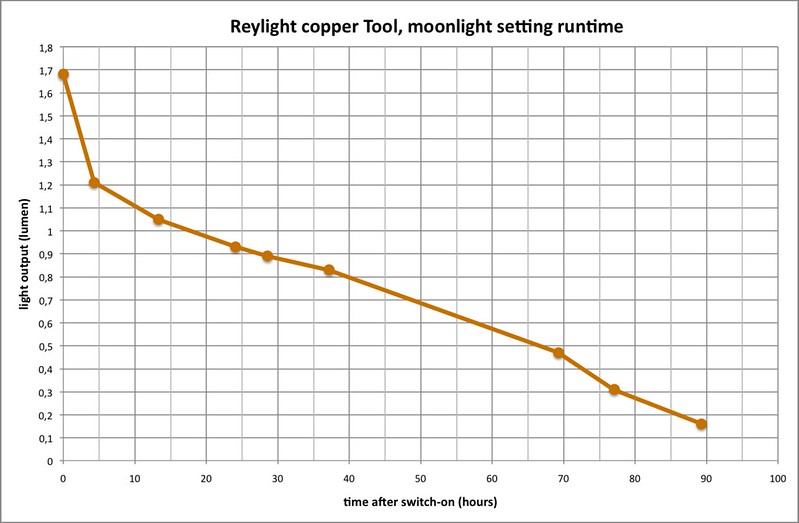I agree if it is interpreted as: voltage under load is voltage under load. Hmm, no, could be a bit more complicated, perhaps it actually is the resting voltage that is the trigger to get the driver going...
I'm testing a partly drained AAA-alkaline right now, first number: resting voltage 1.34V, output 0.91 lumen (consistent with 24 hour runtime), the light switches on alright.
edit: next number, resting voltage (10 minutes rest) 1.12V, output 0.58 lumen (consistent with ~60 hour runtime), the light switches on alright.
edit 2: I tried to find the drain level where the light does keeps on working when it has been on, and does not switch on once switched off. It seems that right around 1.0V the light refuses to light up on low, wether you come from switch off, or from the high setting (a mode switch also powers the light off for a moment of course). The fun came when the light had a close to drained alkaline battery. On high setting the voltage drops under 1.0V, so when switched to low the light went out. But with the flashlight in low mode but with the led off, the battery recovered and a few seconds later the low mode started working and stayed on. This could be repeated: switched to high for 10 seconds, change to low, no light, and after some seconds *magic* low started working again.
I let the battery recover as well as possible (flashlight on low setting for 20 minutes) and measured the light: 0.53 lumen. So this failure to switch on starts at about 65 hours in the above runtime graph, which is -roughly estimated- the last 10% of the battery's energy. So it is a pity that this light is not able to light until full drain of the cell (unless you do not switch the light off in between), but I do not see this as a major problem. Also NiMh batteries stay well above 1.0V at all currents up to even much less than 10% energy level.
I do not know of course if other copies of this light stop switching on at a higher voltage as mine.
edit 3: a simple test if it is the mode control chip that is not switching on: with the almost drained battery, and the flashlight on high, I half-pressed the switch three times. The led went out and came on 15 seconds later, as expected. But if the chip has functioned all the time, it would have come on in high setting (three half presses from high =high), instead it came on in low, indicating that the chip started from off again.

